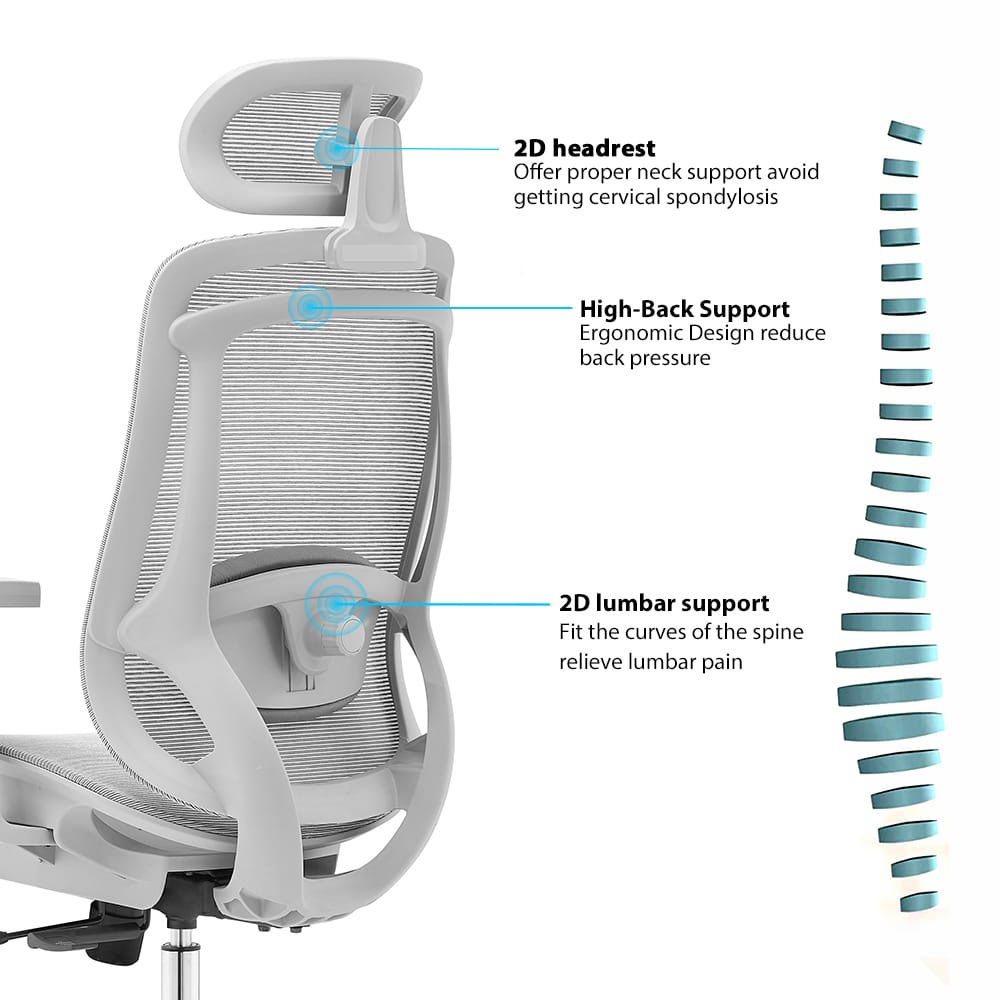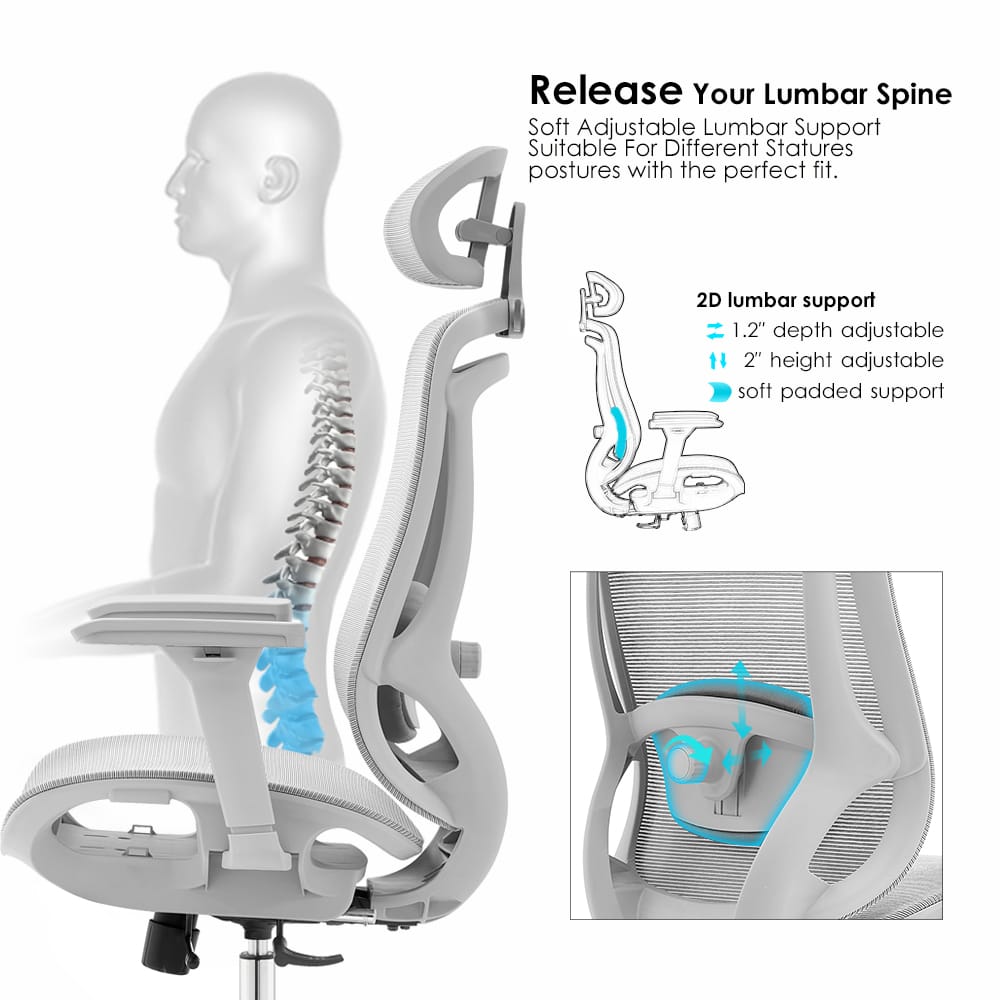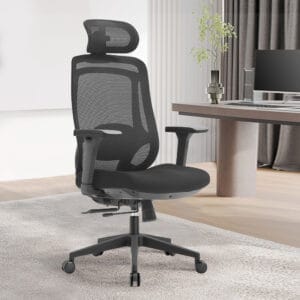Productivity & Work Efficiency
How Office Seating Impacts Your Work Performance
A well-designed workspace is more than just aesthetics—it plays a critical role in productivity, focus, and overall well-being. Whether you’re working from home, managing an office team, or optimizing your company’s workspace, the right office chair and environment can make a huge difference.
Below, we explore the connection between office seating, workplace design, and efficiency, along with practical tips for improving your workspace for better performance.
1. How Your Office Chair Affects Focus and Productivity
How Office Seating Impacts Your Work Performance
Your chair is the foundation of your workspace. A poorly designed chair can lead to discomfort, distractions, and even long-term health issues, reducing your ability to focus and perform at your best.

The Link Between Seating & Productivity
Posture Matters – Sitting incorrectly can cause pain, forcing you to take more breaks.
Comfort Enhances Concentration – The more comfortable you are, the longer you stay engaged.
Ergonomics Reduce Fatigue – Proper lumbar support prevents slouching and energy loss.
Movement Boosts Creativity – Swivel chairs and tilt mechanisms improve flexibility and engagement.
Quick Fixes for Better Focus:
Adjust your chair height so your feet rest flat on the ground.
Use lumbar support to maintain the spine’s natural curve.
Avoid cheap, rigid chairs that restrict movement and cause stiffness.
Productivity Tip: Investing in a high-quality, ergonomic chair reduces fatigue-related distractions and helps you stay focused for longer hours.
2. The Link Between Workplace Design and Employee Performance
An office’s layout, furniture, and environment significantly impact employee productivity and satisfaction. Companies that invest in ergonomic design and comfortable workspaces experience higher efficiency, better employee retention, and reduced absenteeism.
How Workplace Design Affects Performance
Good Chairs = Fewer Sick Days – Ergonomic seating reduces back pain & stress-related injuries.
Collaborative Spaces Encourage Innovation – Open layouts and meeting areas boost teamwork.
Quiet Zones Improve Concentration – Noise-canceling layouts reduce distractions.
Office Design Trends That Improve Productivity
Ergonomic Workstations – Adjustable seating and desks for comfort.
Breakout Spaces – Lounges for relaxation and informal discussions.
Biophilic Design – Natural elements like plants & sunlight boost well-being.
Soundproofing Solutions – Acoustic panels and private pods for deep work.
Productivity Tip: A well-designed office with ergonomic chairs, proper lighting, and designated focus areas leads to happier, more productive employees.
3. How to Avoid Fatigue While Working Long Hours
Fatigue is one of the biggest killers of productivity. Sitting in a poorly designed chair or working in a bad posture can make you feel exhausted before your day is even halfway through.
How to Reduce Fatigue at Work
- Use an Ergonomic Chair That Supports Your Posture
- Your lower back should be supported at all times.
- Your knees should be at a 90-degree angle, feet flat on the ground.
- Adjust Your Seating Position Throughout the Day
- Don’t stay in the same position for too long.
- Use a reclining chair to shift angles and relieve back pressure.

- Take Frequent Micro-Breaks
- Stand up, stretch, or walk around every 30 minutes.
- Use the 20-20-20 rule → Every 20 minutes, look 20 feet away for 20 seconds.
- Stay Hydrated & Maintain Good Air Circulation
- Dehydration causes brain fog and tiredness.
- A well-ventilated office prevents stuffy air from making you drowsy.
Productivity Tip: Moving, stretching, and using an ergonomic chair with good lumbar support keeps energy levels high throughout the day.

